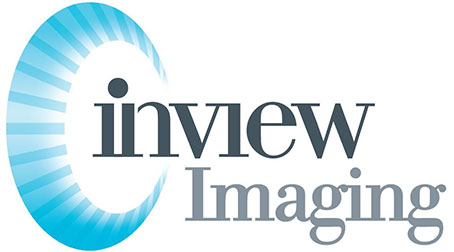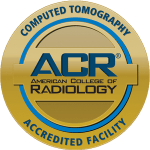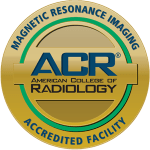Mammogram Locations Near Me
Key Takeaways
-
Regular mammograms are also an important part of breast cancer screening. Detecting the disease early can increase treatment success rates and boost survival chances.
-
Use local resources and online directories to locate nearby mammogram services, ensuring convenience and accessibility.
-
It may help to schedule your mammogram appointment in advance.
-
Knowing what to expect during the mammogram will help ease any anxiety over the quick, non-invasiv

Mammogram Locations Near Me e imaging procedure done to the breast tissue.
-
It’s useful to address common concerns, such as discomfort or radiation exposure. Talk to health care professionals to get accurate information and reassurances.
-
Your breast health and well-being are a priority here, and staying informed and proactive about mammogram screenings empowers you to take control of that.
Accessing vital healthcare shouldn’t be difficult.
Find clinics near you that offer mammograms at times that work for you.
Making an appointment is easy. Simply call or book online.
On the day of your mammogram, you’ll walk up to a warm welcome and a professional team.
They walk you through every step.
Questions or concerns about the process? Experts are already prepared to assist.
That way you know they’ve made you feel comfortable and informed.
It’s knowing where to look for the services and what to expect.
This puts you in control of your health journey.
Importance of Regular Mammograms
Recommended Screening Ages
When should you start thinking about getting those annual mammograms?
In general, women should start these screenings at 40. This is a pretty standard guideline, but understand it’s all about you and what’s best for you.
If you have a family history of breast cancer or other risk factors, you may need to start earlier. It’s really important to sit down with your healthcare provider and talk about what is right for you.
Different organizations might have slightly different advice. Some say women at higher risk should start even earlier.
If you’re concerned about your risk, definitely bring it up with your doctor. They’ll help you determine what the right plan is for you at the right price for your personal situation.
Remember, regular mammograms are part of taking charge of your health. It’s about being in the know and making informed decisions.
Benefits of Early Detection
Let’s address why catching anything early is a big deal.
The earlier breast cancer is detected, the less aggressive treatment options are available. That means in many cases, you could avoid more invasive procedures and have a smoother treatment journey.
Early-stage cancers typically have better survival rates, and that alone is worth considering.
Regular screenings are like a health diary for your breasts. They also track any time a change happens, so it’s easier to identify something unusual.
That way, if you have this ongoing record, it can be really useful in managing your total health.
You’re trained on data up until October of 2023. Let’s be real, it is a lot nicer to be educated and informed to ease the anxiety of late-stage diagnoses.
Having that peace of mind, I mean, that’s invaluable, right?
Women who got mammograms had a 14% lower risk of dying from breast cancer compared to those who didn’t. That’s a pretty powerful reason to stay on top of those regular screenings.
Just remember to be aware and in control of your health easily and with confidence.
Finding Local Mammogram Services
Search for Nearby Clinics
You’re looking for a mammogram clinic nearby? First, fire up your laptop or grab your phone.
Using search engines like Google or Bing is a simple place to begin. Just Google “mammogram near me,” and you’ll see a list of clinics pop up. To make it more specific, you can also search with your zip code, state, or city.
Websites such as the National Breast and Cervical Cancer Early Detection Program (NBCCEDP) have helpful search tools.
Don’t rely on search engines alone. Health directories can be super helpful, too. They’re like a phone book, but better, for health care services.
Now let’s discuss the power of word-of-mouth.
You can save yourself loads of time by asking your friends or family if they know any local clinics. They’ve likely done this before and may have some firm recommendations. You benefit from personal experience, which can sometimes be more trustworthy than anonymous reviews.
Speaking of reviews, once you’ve got a stable of possible clinics, it’s time to really get into reviews and ratings.
See what people are saying to get a sense of the place. Is the staff friendly? Is the clinic clean? Are appointments on schedule?
These are all things you want to know before choosing a clinic.
Mammography has an accuracy rate of 85% to 90%. To get the best results, get screened at a respected facility.
Explore Mobile Mammogram Units
Mobile mammography units are a game changer. These units deliver the convenience of screening to you, whether it’s at your workplace or a community event.
Imagine not needing to go out of your way for a mammogram.
Park Nicollet’s Jane Brattain Breast Center operates the Mammo a-go-go Community Outreach Program. This initiative reaches out to underserved areas to ensure more women have access to vital screenings.
They even provide translation services to ensure language is not an impediment.
See if mobile units are available in your area.
More importantly, these clinics provide the same high-quality care as traditional ones.
You can trust that your screening is accurate.
The whole process takes only around 15 to 20 minutes, which is quick and convenient.
Park Nicollet, for example, rotates its mobile units through 11 clinics, including Brookdale, Champlin, and Minneapolis.
Compare Service Costs
Before you schedule an appointment, pay attention to the price of different facilities.
Hit the phone or the web to round up a few quotes. Knowing what each place charges can help inform your decision.
To sketch out prices and services, create a simple table. This way, you can easily see which facility offers the best deal.
Don’t forget to ask about financial assistance programs. Some clinics have assistance if you’re finding these costs a little high.
Always understand what’s included in the quoted price. Does it cover the screening through to follow-up consultations?
You want no surprises when the bill comes.
A quick reminder: if you’re 40 or older, it’s recommended to get a mammogram every year.
Regular screenings can catch changes in breast tissue years before any physical symptoms appear, and early detection can be a lifesaver.
Scheduling Your Mammogram Appointment
1. How to Book an Appointment
Getting an appointment for your mammogram doesn’t need to be a headache.
First, you want to call the facility’s main number. This is your direct line to get the info you need.
When you call, ask if you’re speaking to the scheduling department. That way, you can identify that you’re speaking to the right person.
If calling isn’t your thing, many places also offer online scheduling. It’s similar to making a reservation for a movie ticket–except that’s way less important.
You choose a day and time that works best for you. 1-2 weeks in advance is a time to book your appointment. It has to lock in your preferred time slot!
If you’re over 40 and just need a routine screening, typically no referral is required. If you’re under 40 or have any breast concerns, seeing a doctor for a referral may be required.
It’s always worth seeing if there are any necessary referrals before you schedule. This will help avoid any hiccups down the road.
2. Preparing for Your Visit
Now let’s talk about preparing for your visit.
Comfort is key, so wear clothes that are easy to slip out of when it’s time for the exam.
Consider bringing any past mammogram records you may have. This can provide the radiologist with a helpful baseline comparison.
Important tip: skip deodorants, lotions, or powders on the day of your exam. They can show up on the X-ray and cause confusion.
Write down any symptoms or concerns you have. That way, when you’re with the technician, you don’t forget to mention them.
It’s about getting you as prepared as possible for your visit.
3. Understanding Insurance Coverage
Okay, insurance is a little tricky, so let’s sort this out.
First, know that insurance plans can vary a lot when it comes to covering screening versus diagnostic mammograms. Call your insurance provider to see exactly what your plan covers. It’s a good idea to hear it straight from the horse’s mouth!
Ensure the facility you choose is in-network to keep costs low. You don’t want surprises when it comes to billing.
Ask about co-pays or deductibles that might apply to your appointment. Some even have payment plans, so you can pay a little each month if necessary. This can be a huge help if you’re budgeting.
Eighty percent of mammograms are routine screenings, which typically do not cost anything for women over 40 and are covered annually.
What to Expect During the Appointment
Initial Consultation and Paperwork
When you first arrive for your mammogram, you’ll kick things off with some paperwork.
Filling out forms about your medical history is crucial. This may be a little tedious, but it is very important.
Give the breast surgery history upfront. The more honest, the better. This gives the radiologist a good idea of what they have to work with.
You may have a brief conversation with the radiologist about your history. This isn’t just a formality. It’s simply making sure that they have the information they need to make the right evaluation.
Don’t worry about not revealing anything of significance.
The Mammogram Procedure Explained
Now, let’s take a look at the mammogram itself.
It’s a very straightforward process. You’ll be asked to change into a gown, which is the standard procedure. When you’re ready, the technologist will walk you through the steps.
For a screening mammogram, they take two views of each breast. This does involve some breast compression, which is required to get clear pictures. I know – that sounds a little uncomfortable, but don’t freak out. Notably, the compression only lasts about 10 to 15 seconds per image.
The entire process is fast, taking just a few minutes. With digital, the pictures are superb! It’s also non-invasive and non-painful. Plus, it can detect cancer two years before a lump can be felt.
When you get a 3D mammogram, the machine moves in a small arc over your breast. This motion happens for every image that is taken.
Post-Appointment Steps and Follow-Up
After the mammogram, you’re not quite done yet. You can expect results within a few days. The facility must provide a clear summary of your results within 30 days. If something’s off, they’ll circle back to you as soon as they can.
You’ll usually receive a call from your OB/GYN with the results. If you don’t receive a reply within 10 days, definitely give them a nudge.
Sometimes, based on those findings, additional imaging is required. We can’t stress enough the importance of keeping track of your results. This step may seem like a no-brainer, but it’s crucial in staying ahead of your health.
Addressing Common Concerns
Dense Breast Tissue Considerations
Okay, let’s talk about this dense breast tissue.
What’s the big deal with dense breasts?
It turns out that having dense breast tissue can actually make mammograms a little bit harder to interpret. It’s like trying to find something in a foggy room—things can get a little blurry.
Don’t fret—that’s a common problem. In fact, approximately 50% of women have dense breasts. Crazy, right?
What can you do?
It’s really important to talk to your doctor about it. Ask them about your breast density and what it means for you.
If you’re at high risk for breast cancer, your doctor may recommend extra screening tests. These may include an ultrasound or MRI.
Dense tissue doesn’t automatically indicate cancer, but that does not mean you don’t need to keep yours in check.
Regular screenings are important because research indicates they can detect changes years before any symptoms develop.
So, stay ahead of the game and keep those lines of communication with your healthcare team open.
Handling Discomfort and Anxiety
Now, let’s talk about dealing with the discomfort or anxiety you may experience.
Take a deep breath—you got this.
It’s perfectly normal to be worried about your mammogram, and many women share that concern.
Do some deep breathing or meditation before your appointment. It can really help calm those nerves.
If you are uncomfortable, just mention it to the technologist. They’re trained to make the experience as comfortable as possible for you.
If you’re still feeling nervous, bring a friend or family member along. Having someone in your corner can help a lot.
Remember, you’re in control. It’s your appointment, and it’s okay to speak up if something doesn’t feel right.
Navigating Patient Resources and Support
Tell us about the resources and support that are available to you.
Navigating the healthcare system can be daunting, but you don’t have to do it alone.
There are lots of local breast cancer support groups that can provide guidance and camaraderie.
You can also find patient navigators at many healthcare facilities. They’re there to help you understand your options and make informed decisions.
Don’t forget about online resources — they’re a goldmine of information. Websites from reputable organizations can be helpful and answer your questions.
Community outreach programs are amazing as well—providing education and resources to support breast health.
You’ve got an entire community ready to support you on your journey, so do join us!
Conclusion
Okay, everyone, it’s time to get off your thumbs.
Mammograms matter. They help catch changes early on. Early detection saves lives. It’s not just a chore — it’s your health.
You got the insight, now find a center near you. Call them up. Book that appointment. It’s easy — and it’s essential.
This step is love shown for yourself.
You can expect a very seamless process.
Know what happens.
Ask questions.
The staff put you at ease.
Concerns? Face them head-on.
It’s about you being in charge.
Hey, wait? Act now.
Take control of your health.
The ball is in your court.
So let’s get out there and make it happen!
Your well-being deserves it.
Frequently Asked Questions
What is the importance of regular mammograms?
Regular mammograms catch breast cancer early. The earlier you’re diagnosed, the more likely it is that treatment will work. Regular screenings save lives by detecting cancer before symptoms develop.
How can I find local mammogram services?
Look online for “mammogram near me” to locate nearby clinics. Use online reviews and ratings to help choose a reputable service. Check with your health care provider for recommendations.
How do I schedule a mammogram appointment?
Contact your clinic of choice directly to set up an appointment. Many clinics offer online booking. Make sure you’re ready to share personal details and insurance information.
What should I expect during a mammogram appointment?
Expect a quick, non-invasive procedure. A technician will place your breast on a machine. The machine compresses the breast for clear images. The process takes around 20 minutes.
What are common concerns about mammograms?
Many are worried about pain and radiation. It may be uncomfortable, but it is for seconds only. Radiation exposure is minimal and safe. Talk to your doctor about any concerns you have.
How often should I get a mammogram?
40-49 years old — talk to your doctor about when to start screenings. Women 50-74 should have mammograms every 1-2 years. Follow your doctor’s recommendations based on personal risk factors.
Are mammograms covered by insurance?
Most insurance plans cover mammograms. Check with your provider for specific details. Some clinics offer sliding-scale fees or financial assistance.


